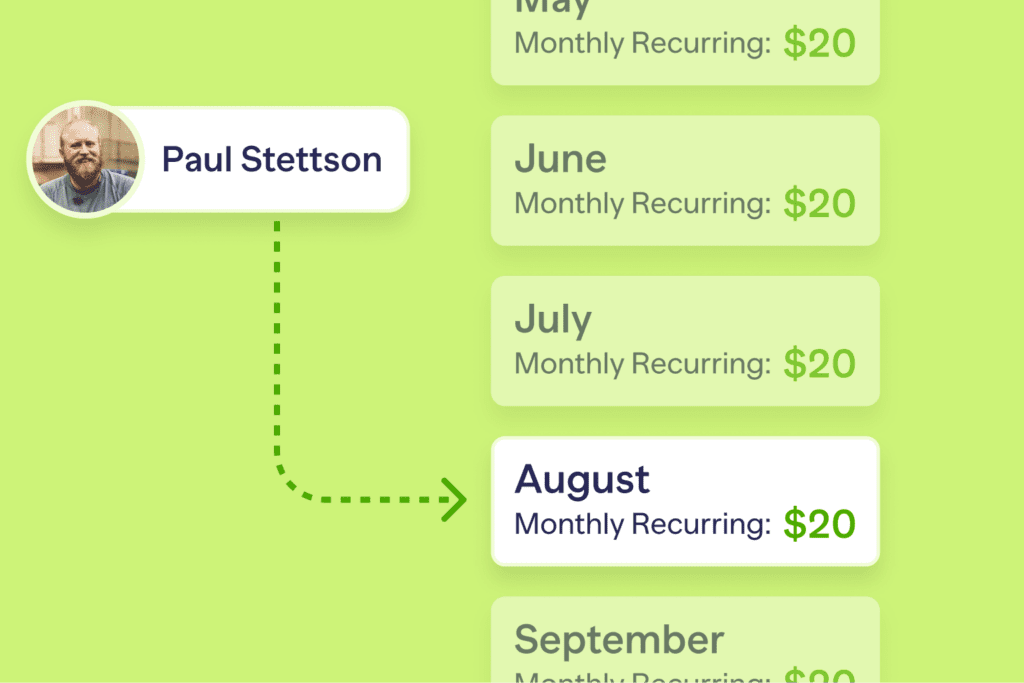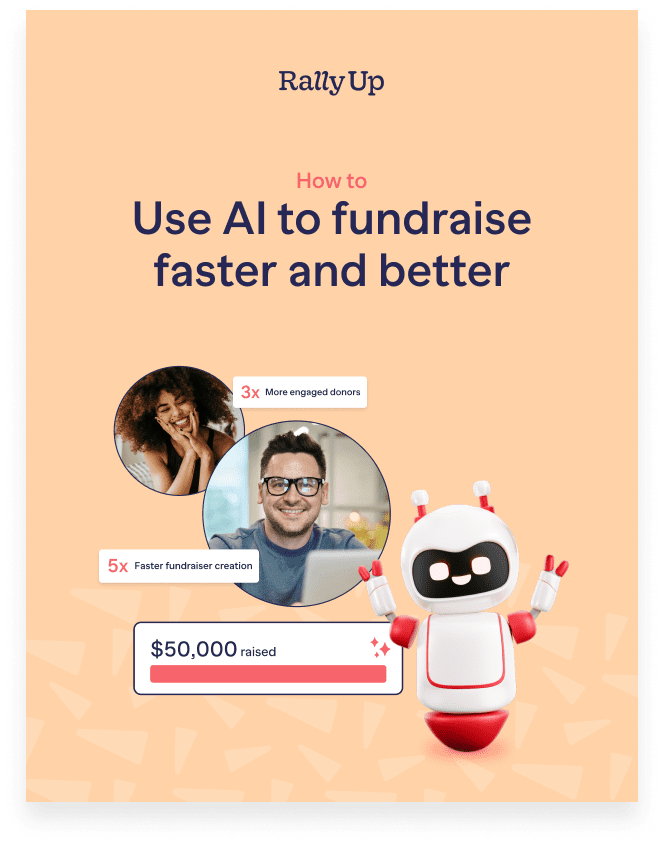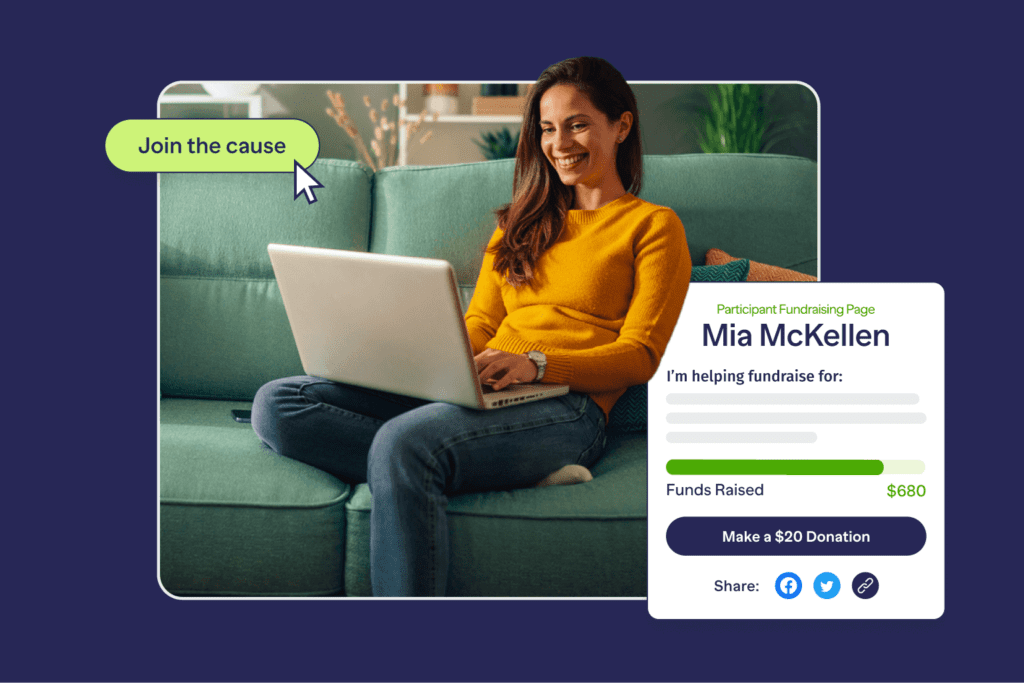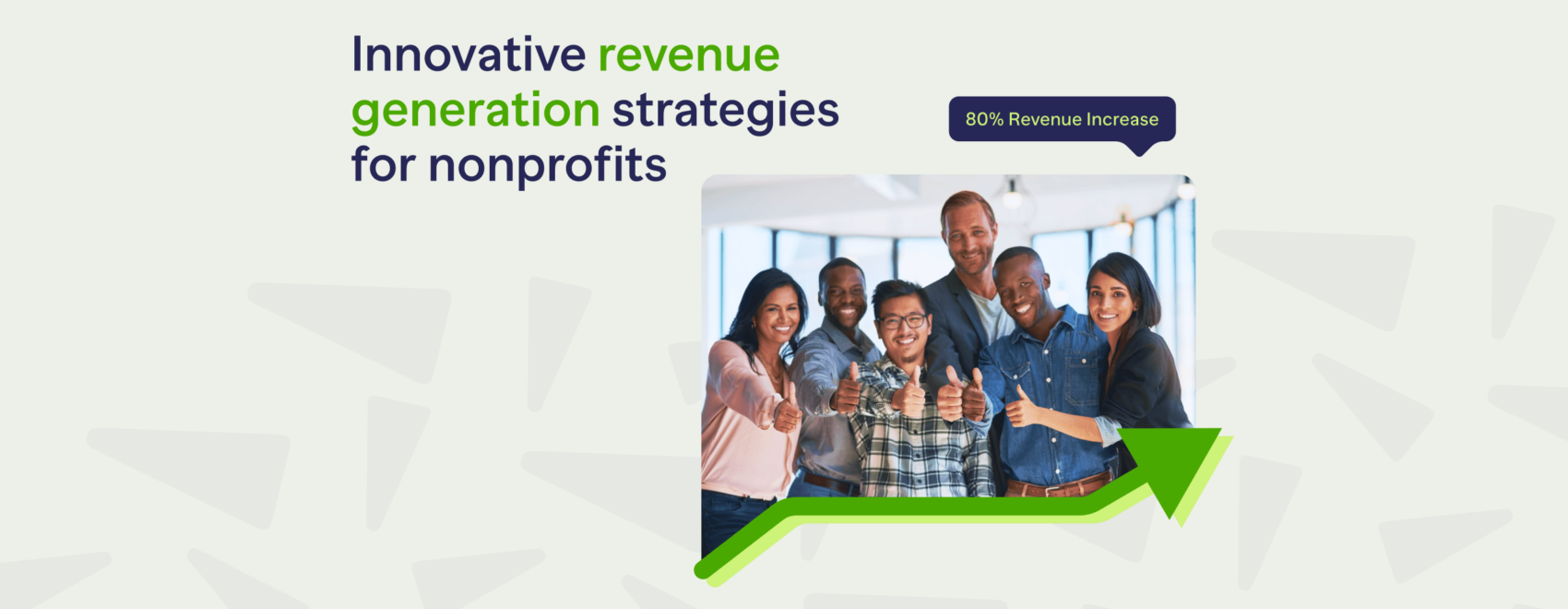A shortcut to finding potential in your nonprofit
Ready to discover new ways to increase your earned income? Start by looking at your NPO through a fresh lens. Step outside the daily grind and get a new perspective.
Here’s where to begin:
- What gaps are holding you back? What roadblocks are your customers, members, or beneficiaries hitting?
- What’s your unfair advantage? What do you do better than anyone else out there?
- What valuable assets do you have? Think intellectual property, curriculum, systems, or even physical space.
- What kind of support does an organization, community, or individual really need? It’s all about customizing the help to fit the giver’s goals.
Here are some basic queries to think about as you figure out the best kind of assistance.
What impact do you want to make?
Are you aiming to change a single life or spark a bigger movement? It all comes down to your donor goal: Do you want to help someone directly or make an impact on many?
Or, why not both?
How can people trust the cause?
What is the #1 reason donors stop giving? They don’t trust that their money is being spent wisely. Right behind that, donors feel disconnected from the nonprofit they once supported.
This shows that nonprofits must prove their trustworthiness. After all, actions speak louder than words!
What is mutual aid?
Mutual aid is all about neighbors coming together to help each other when traditional systems fall short. It’s support that feels like solidarity, not charity. Everyone chips in, and it’s a two-way street.
But there’s a catch. Resources run low. People burn out. Not every request can be answered. And sometimes, organizers’ politics clash.
Still, the beauty of it is that the help comes from the community itself. People interact directly with those who benefit. It’s not just like, “I’ll donate, and I am done.” It’s about relationships, not just transactions.
Want to connect with donors?
A new study shows that you don’t need the usual “sadvertising” to get people to give. In fact, people are more likely to donate when they’re in a good mood and happy.
That’s right! Research by Nathan Chan and Casey Wichman found that people who feel upbeat are more inclined to support a cause. So, it’s not about giving to feel good anymore. It’s feeling good first—and then giving.
“It suggests that rather than this conventional notion that people give because it makes them feel good about themselves for doing the right thing, we found that people were in a good mood prior to donating, and that’s potentially the causal factor for why they decided to give,” Wichman said.
License your intellectual property
Does your nonprofit have something that makes your organization stand out? Maybe you’ve got a shortcut, a tool, a process, or even a system or app that makes success happen faster. Well, why not turn that into income?
If your nonprofit’s got something special, consider licensing it to other cities, states, or nonprofits. It’s a game-changer, especially if you’re tech-savvy!
Consider The Door, a nonprofit in New York that developed an online platform to help youth connect with resources like jobs, education, and housing. They built a system that tracks interactions with youth and helps match them with the right support services.
The Door started licensing this platform to other nonprofits and community organizations. By charging a fee for the license, they’ve created a sustainable funding model that helps other organizations while covering the maintenance costs of their platform.

Consulting and training
A smart, low-cost way to earn income? Leverage your consulting or training services. It’s one of the most cost-effective ways to raise revenue because you’re simply packaging your expertise—no need to reinvent the wheel.
All you have to do is offer training or consulting in your area of expertise. Charge for tickets, a flat fee, or hourly rates. Just make sure to cover costs like staff time, space rentals, or materials.
For example, The Center for Nonprofit Advancement offers training programs and consulting services to nonprofits. They specialize in helping organizations grow and improve their operations by offering leadership development, fundraising strategy, and management training.
By charging for these services, they generate revenue while helping others build stronger, more effective nonprofits.
Asset renting
Got space? Turn it into income! Physical space is valuable, and if your nonprofit has extra, why not make it work for you?
Even if you’ve got an office, a conference room, or a gym that sits empty part of the time, it’s a goldmine waiting to be tapped. Rent it out! Think about how churches often rent their spaces for weddings, meetings, or classes.
The Refugee and Immigrant Fund, for example, rents out its community hall to local groups for cultural events, workshops, and even fitness classes. They charge a rental fee, which helps support their programs while keeping the space active and engaged in the community.
By renting out, they’re generating income while offering a valuable venue for local events!
Smart, right?
A donation button
Think of your website as the face of your nonprofit online. It is a place for info— but it can be a major player in sustaining your mission long-term!
How? By adding a donation button to key pages—or even better, to every page! This makes it super easy for visitors to donate whenever the mood strikes.
Your donation form can be more than just a “give” button. Include options like pre-set amounts, fields for names, and even the chance to donate in someone’s memory.
It might seem like small stuff, but people love the option to give in honor of someone who touched their life. It makes their gift even more meaningful!

Recurring donations
Getting a one-time donation takes time and effort, right? And every year, you have to reach out to past donors, hoping they’ll give again. But what if you could make it easier?
Enter recurring donations! With a recurring donation program, you can bring in donations all year long—and then some!
Why are they awesome? Because they give you the consistency you need to keep your nonprofit stable. Even if someone gives just $10 a month, that’s $120 a year! Add that up with all your donors, and you’re looking at thousands (or even millions) more in income.
You can ask for recurring donations everywhere—on your website, social media, and through email.
Partner with a for-profit company
Nonprofits around the world are crushing it by teaming up with for-profit companies. Look this way: every time someone buys from one of these companies, they’re asked to donate just a dollar to your nonprofit. That dollar? It goes straight to you—no extra work is required!
It might take a bit of time to set up these partnerships, but once you’ve got an established connection, it’s smooth sailing. Big e-commerce companies are especially great—they ship everywhere and process tons of orders, which means more donations for you! This type of collaboration can also support your long-term fundraising strategy.
Artificial Intelligence (AI) addition
AI is a game-changer for raising donor engagement and streamlining your operations! Just look at The Kids Cancer Project—they used AI to dive into donor data and saw some jaw-dropping results: an 83% jump in regular donations and a 30% growth in their donor network!
Here’s how it goes: AI helped them understand when donors were most likely to give, which channels were working best, and how to personalize messages to keep people coming back. Thanks to these smart insights, they supercharged their fundraising efforts, leading to a major increase in regular giving.
But it didn’t stop there! AI also helped grow their donor base by 30% year after year, proving that AI isn’t just about keeping current supporters engaged—it’s also about attracting new ones. Pretty powerful, right?

AI can save you so much time building out creative and successful fundraising campaigns
Download our free e-bookImpact investing
Impact investing is about finding opportunities for investing that offer more than just profit. It addresses societal challenges such as poverty, climate change, or access to education and healthcare.
For nonprofits, this means they can create financial sustainability by investing in projects that help fund their work, while still remaining true to their values.
You get financial returns and make a difference socially or environmentally.
The goal of impact investing? Simple:
- Financial return: You’re aiming for a solid return—whether it’s profit or keeping your capital safe.
- Social or environmental impact: The investment should make the world a better place by solving big, pressing challenges.
Impact investing examples
Green Bonds are bonds created by governments, companies, or organizations to fund amazing environmental projects. Think renewable energy, climate action, or conservation efforts. Investing in green bonds? You’re helping the planet and your portfolio!
How cool is that?
How it works? When you invest in a green bond, you’re lending money to a project. In return, you get paid back over time—just like with any bond. But – the funds from green bonds go to projects that make the world a better place, like:
- Renewable energy: Solar, wind, and hydropower projects that cut down on fossil fuel use.
- Climate change action: Projects designed to lower carbon emissions and fight the effects of climate change.
- Conservation: Protecting ecosystems, wildlife, and natural resources for the future.
With green bonds, you can make a financial return while backing eco-friendly initiatives. And since they’re often backed by solid institutions like governments or major companies, they’re a pretty secure investment.
How does it benefit nonprofits?
Nonprofits can buy green bonds as a smart investment. You’ll get regular interest payments and eventually get your original investment back when the bond matures.
The money raised by these bonds goes straight into projects that match your nonprofit’s mission—whether it’s fighting climate change or promoting sustainability. It’s a win for your finances and your cause while also supporting a sustainable fundraising strategy!

Peer-to-Peer fundraising
Encourage your supporters to launch their own fundraising campaigns! It’s a fun way to grow your reach and connect with new donors. When your supporters tap into their personal networks, they’re raising funds for your cause—while spreading the word to people you may not have reached otherwise!
Imagine your nonprofit is raising funds for after-school programs. With RallyUp, you can set up a sale fundraiser where supporters sell custom-designed t-shirts. Each supporter can create their own fundraising page, set a personal goal, and share it with their network. As they sell t-shirts, they track their progress, and the funds raised contribute to your overall campaign goal.
Check out RallyUp’s case studies and blogs that are jam-packed with fundraising ideas for nonprofits of all shapes and sizes!
Giving levels
Want to get your donors to give more? Try offering different giving levels! It’s backed by research—and it’s all about human psychology.
We’re social creatures. We watch what others do and follow suit. When you suggest giving levels, donors have a clear idea of what’s “appropriate” to give.
According to Sugden’s reciprocity model, seeing how much others contribute can inspire people to give more.
Let’s say your nonprofit is raising funds for a new community center. Instead of just asking for a general donation, you could create giving levels like this:
- $25 – Helps purchase supplies for one class.
- $50 – Provides a scholarship for a child to attend a summer camp.
- $100 – Sponsors a family for a year of community center activities.
- $500 – Covers the cost of an entire month of programming for the center.
When donors see these levels, they know exactly what their contribution will help achieve. Plus, if they see others choosing higher amounts, they might feel more motivated to give a little extra.
For example, RallyUp’s Impact levels show your donors how their donations directly contribute to your organization.
How RallyUp Impact Levels Work:
- Each donation tier is paired with an image, title, and description that clearly conveys the difference the contribution will make.
- Impact Levels inspire donors to increase their contributions. And they exactly know how their money will be used.
- Fundraisers can tailor Impact Levels to align with the needs of their cause.
It’s all about offering clear options and subtly encouraging bigger donations while still leaving room for personal choice! It can be a powerful tool in any fundraising strategy!
